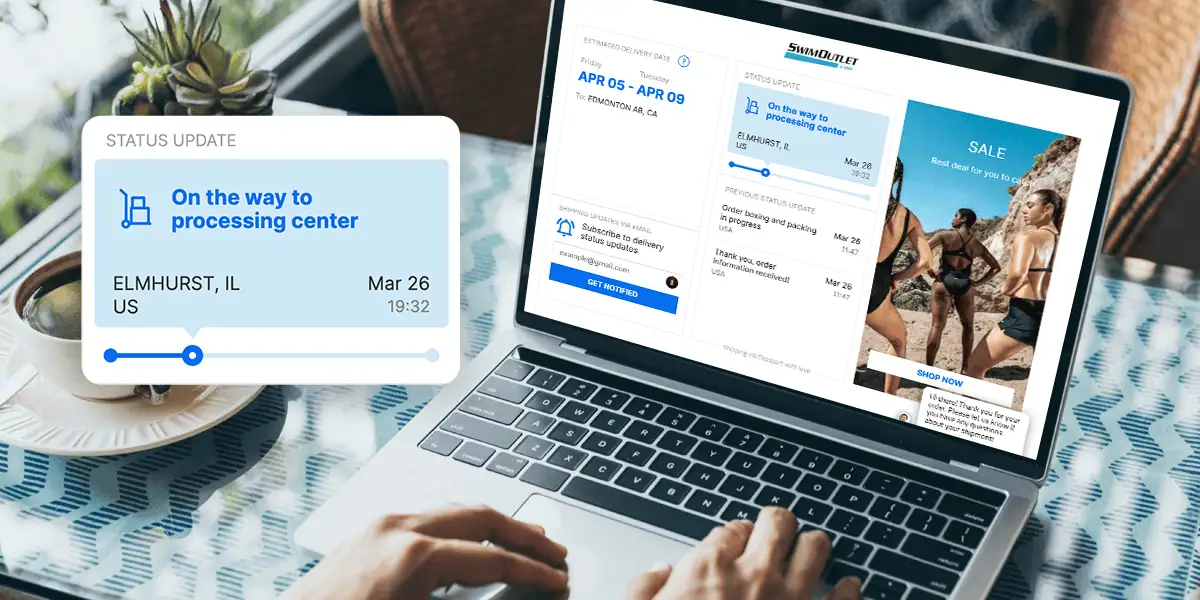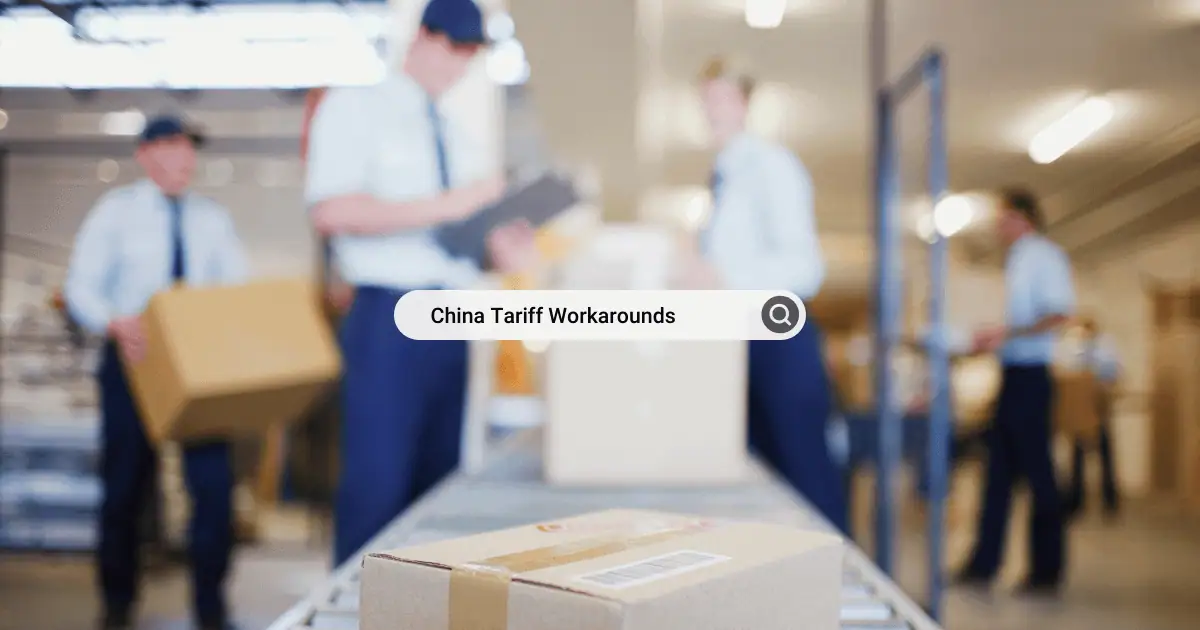For years, small and midsized direct-to-consumer (DTC) brands enjoyed a de minimis free pass on low-value imports. Under U.S. law, packages valued under $800 could enter duty-free with minimal customs formalities (known as the Section 321 exemption). Many e-commerce sellers shipping products made in China and Hong Kong leaned heavily on this loophole to avoid import duties and the Trump-era Section 301 tariffs (often 7.5%–25% on Chinese goods). That era has abruptly ended. On May 2nd, 2025, the U.S. government eliminated duty-free de minimis treatment for goods originating from China and Hong Kong. This policy change – aimed at curbing abuses by fast-fashion giants like Shein and Temu – means no shipment from China is too small to tax.
The impact is dramatic. Shipments from China, regardless of value, are now subject to punitive tariffs of at least 30% on top of normal import duties. For example, an express parcel once cleared free now may incur more than 100% in total tariffs. Small packages sent via postal channels face a hefty 54% tax (or a flat $100 per package), making the duty often higher than the product’s price. In short, the U.S. has slammed shut the low-value loophole that many DTC importers relied on. For brands used to shipping under the radar, the new reality is a potential margin-killer.
It’s no surprise that impacted merchants are scrambling for alternatives. In this environment, a cottage industry of “creative” solutions has emerged, promoting shady workarounds to help brands dodge tariffs. Some suppliers and logistics providers are whispering: “Don’t worry, we have ways to get your goods in cheap, just like before.” These schemes range from clever accounting maneuvers to outright fraud. They promise to blunt the tariff pain – but at high legal risk to the unwary brands that attempt them. Before you get tempted, let’s pull back the curtain on some of the most common dodges being marketed today, and why they’re a fast track to trouble.
The Lure of High-Risk Tariff Workarounds
It’s easy to understand the allure. When faced with paying an extra 30% (or 100%!) on product costs, a small e-commerce seller might feel pressure to “get creative” just to survive. Foreign suppliers and middlemen know this. Many overseas vendors now offer to handle shipping “duty-free” or “tax-included” – which often translates to murky schemes behind the scenes. Some providers advertise “solutions” that sound too good to be true: just set up a US LLC and reduce your tariffs by 80 percent! The promise of these tactics is simple: keep your costs low and stay competitive by outsmarting Trump’s tariffs.
But if a strategy sounds too good to be legal, it probably is. U.S. Customs and Border Protection (CBP) and the Department of Justice (DOJ) are well aware of these ploys and are cracking down hard. In 2025, CBP explicitly flagged undervalued shipments, misclassified products, and dubious documentation as top enforcement targets. DOJ, for its part, has named “trade and customs fraud, including tariff evasion” as their second-highest enforcement priority and ramped up use of the False Claims Act and even criminal smuggling statutes to pursue tariff evasion schemes. E-commerce companies need to recognize that many of these “workarounds” aren’t clever tricks – they’re high-risk violations. Below we break down several schemes currently being pushed in the market, and real-world examples of the consequences when merchants get caught.
Undervaluation via DDP Shell Games
One of the most prevalent schemes is undervaluation – deliberately declaring a much lower product value on customs paperwork to slash the duty owed. This often comes bundled with so-called “DDP” deals (Delivered Duty Paid shipping) arranged by the foreign supplier or their shell import company. Under a DDP arrangement, the overseas seller handles the entire import process, accounting for all duties and delivering the goods to the U.S. buyer’s doorstep. In reality, some DDP offers are outright fraud in disguise. As one legal expert bluntly put it, the pitch often really means: “We’ll falsify customs documents, underdeclare the value, misclassify the goods – and hope CBP doesn’t catch it.”
It’s easy for importers to assume that if they didn’t file the entry, they’re safe. That assumption is dangerously false. U.S. law doesn’t let a domestic buyer off the hook just because a foreign middleman filed the customs entry. If your business benefits from an undervaluation scheme or “turns a blind eye” to suspiciously low prices, CBP can still hold you liable. Courts and Customs have made it clear that liability attaches to the conduct, not just whose name is on the paperwork. In other words, you can’t wash your hands of a false customs declaration that you benefited from.
Split Invoicing: Hiding True Value in Fake Fees
A close cousin of simple undervaluation is the “split invoice” scheme. Here, the importer tries to hide the real value of goods by splitting the cost across multiple invoices or line items – some dutiable, some not. For example, a merchant might arrange for the supplier to issue an invoice that dramatically understates the product’s value while inflating other charges like freight, insurance, agent commissions, or design fees. On paper, the product itself looks cheap, and import duties (which apply mostly to the goods’ value) are low. The extra charges are either not subject to duty or simply not reported to customs at all. This tactic is just another form of undervaluation – and it’s equally risky.
Misclassification and Tariff Engineering Tricks
Another common ploy is to misclassify the product or “engineer” it to fit a lower-duty category. Every imported item has a code in the Harmonized Tariff Schedule (HTS) that determines its duty rate and whether Section 301 tariffs apply. Unscrupulous advisors might suggest creative re-labeling of your product’s category.Tariff engineering can also involve minor modifications to the product so it technically falls under a different code.
While tariff classification can be complex and there is some leeway for legitimate planning, deliberate misclassification is illegal. In fact, trade attorneys note that misclassifying goods to slip into a lower tariff bracket is a “common tactic of tariff evasion,” and it’s one of three major risk areas drawing enforcement fire.
There is also a trend of so-called “tariff engineering” being pushed as a service. Some of this is legitimate – for instance, designing a product in a way that it qualifies for a lower tariff heading can be legal if done transparently. But often the term is a fig leaf for misclassification. One scenario might be altering a product slightly to fit a technical definition of a different category. If the main purpose of the change was to dodge duty and the end product is essentially the original item, they may reclassify it and penalize the importer. A recent CBP ruling in early 2025, for example, denied a tariff engineering claim where the “modified” product was essentially finished goods with trivial alterations. Tariff engineering is only safe if it’s real and fully compliant.
Origin Washing: “Made In Elsewhere” Schemes
Perhaps the most rampant evasion tactic under the China tariffs has been country-of-origin laundering – disguising Chinese-origin goods as products of another country to dodge duties. With de minimis gone for China, these schemes are only becoming more tempting. The offers might sound like this: “We can ship your goods through Vietnam (or Malaysia, Mexico, etc.), do a little repackaging or assembly, and then label them as Made in Vietnam so they won’t incur China tariffs.” In more brazen cases, there isn’t even real processing – just paperwork magic. A Chinese factory sends products to a warehouse in a third country, which then immediately re-exports to the U.S. with new origin documents claiming local manufacture. The technical term for this is illegal transshipment, and U.S. authorities are intensely focused on stamping it out. Routing goods produced in a high-tariff country through a lower-tariff country and pretending they originate there is exactly the kind of tariff evasion CBP is targeting.
CBP has sharpened its tools to detect origin fraud. They conduct supply chain audits, visit purported factories in third countries, and use data analytics to spot improbable trade shifts (like sudden huge volumes from a country that never produced that category of goods before). If you claim your product is “Made in Vietnam,” you need to have proof of substantial transformation there – meaning a significant manufacturing process that truly changed the product’s identity. Simply transloading or repackaging in a second country does not change the origin under U.S. law. In fact, CBP’s rules are strict: the country of origin is where the item was last “manufactured, grown, or underwent substantial transformation” into the final product. Everything else is just transit.
Postal Routing and Other Last-Ditch Loopholes
With formal channels tightening, some merchants are even considering postal routing schemes to fly under the radar. International mail has historically been a softer point in the enforcement chain as the Country of Origin is not a required data element. Some are advising merchants to route packages through third-country postal systems to disguise their true origin. For instance, bulk ship your Chinese products to a proxy warehouse in, say, Singapore or Canada, then drop-ship them individually via that country’s postal service to U.S. customers. The package might appear as if it’s coming from Singapore, hopefully bypassing the China-specific scrutiny.
There is no magical postal loophole that lets you evade tariffs. Every route into the U.S. is subject to enforcement. With the volume of e-commerce, CBP uses risk-based targeting. If your parcels have tell-tale signs of being remailed Chinese goods, you’re likely to end up flagged in an enforcement operation. CBP’s past “Operation Mega Flex” specifically targeted Section 321 abuse in mail and express consignments, and it resulted in thousands of inspections of e-commerce packages. Given the new policies, we can expect even more aggressive spot-checks on mail parcels originating from transit countries.
Compliance Isn’t Optional – It’s Your Competitive Reality
U.S. authorities in 2025 are in an enforcement overdrive on customs fraud and tariff evasion. Small and mid-sized brands are no exception – in fact, with the explosion of DTC e-commerce, regulators know that violations aren’t confined to big importers. A recent CBP enforcement report in April 2025 showed the trend: in one month, Customs completed 33 audits uncovering $117 million in underpaid duties and stepped up seizures of goods for violations. CBP officials have explicitly warned that misclassified HTS codes, undervalued shipments, and phony paperwork are red flags that will trigger audits and penalties. They are also leveraging technology and interagency data to identify fraud. Today’s climate is one of heightened vigilance and cooperation between agencies to enforce trade laws. -commerce importers are under the microscope like never before.
Facing these changes can be intimidating, but savvy merchants are already transforming tariff challenges into competitive advantages. By shifting inventory into key markets like the U.S. and using in-country fulfillment through local warehouses or 3PL providers, merchants can significantly lower their declared customs value—often far below the retail price—thus reducing tariff exposure and overall import costs. Many brands previously reliant on U.S. de minimis are now embracing a strategic hybrid model: placing high-demand products into local fulfillment centers, while continuing direct-to-consumer shipping from overseas for less popular items. If your brand has meaningful sales volume in the U.S., consider crunching the numbers—often, the tariff savings and improved delivery speeds more than offset the warehousing costs, turning a compliance challenge into a profitable strategic shift.
Ready to future-proof your international shipping? Passport is here to help you navigate these complexities, ensuring your U.S. market entry remains profitable, compliant, and worry-free.
Want to learn more? Watch our webinar recorded on Friday, May 16th, as we explore the impacts of the de minimis change and how brands can compliantly mitigate impacts. Watch here.
Want to discuss potential solutions? Reach out to Neoshi Chhadva, General Manager of U.S. Solutions, neoshi@passportglobal.com.
This article is provided for informational purposes only and does not constitute legal advice. Merchants are advised to consult with their customs broker and legal counsel to ensure compliance with all applicable laws and regulations based on their specific circumstances.
Authored by Thomas Taggart
Head of Global Trade | Passport
Thomas Taggart is a cross-border commerce leader with more than 20 years of experience in international shipping and regulatory affairs. As the Head of Global Trade, Thomas helps ecommerce brands go global by simplifying international trade, tax, and product compliance issues. Prior to Passport, he brought international shipping solutions to market through multiple roles in UPS’s product development organization.












